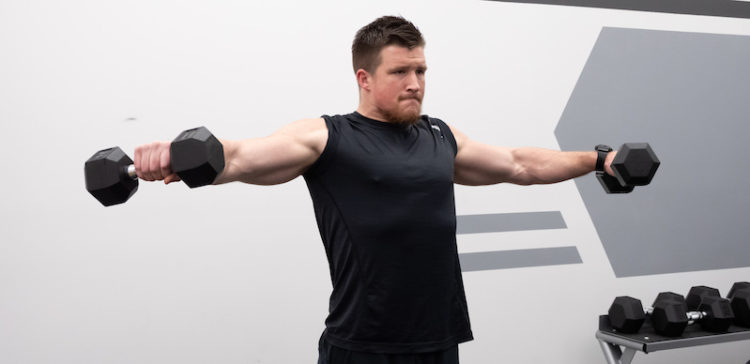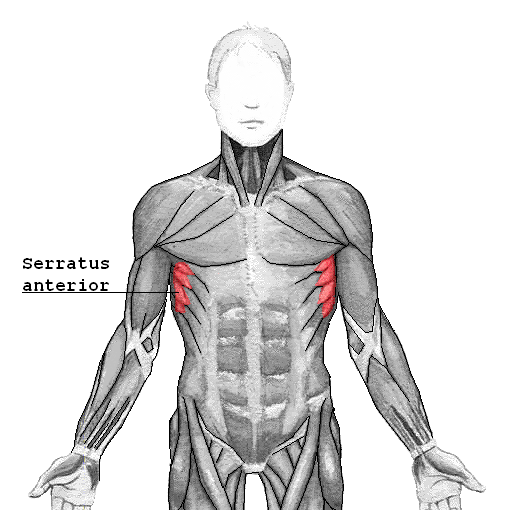If you’ve lifted weights for any length of time you’ve probably hurt your shoulder.
That sucks.
The shoulder is a shallow ball and socket joint that has the very handy ability to move in multiple directions. These directions include
- Shoulder abduction
- Shoulder adduction
- Shoulder horizontal abduction
- Shoulder horizontal adduction
- Scapular upward and downward rotation
- Scapular elevation and depression
- Internal and external rotation
- Circumduction
All means there’s a lot of things that can go wrong.
All this mobility is great, but the shoulder needs stability as well. The four muscles of the rotator cuff work overtime to keep this ball and socket joint in a vertical position no matter you do.
However, the rest of the stability equation is up to you by getting the muscles around the shoulder girdle strong. Doing variations of pushes, pulls, shoulder raises, and planks usually does the trick.
Even when you reduce the risk of injury, the occasional shoulder injury happens when you’re pushing your limits, and you’re more likely to have shoulder problems as you grow older because the soft tissues surrounding the joint tend to degenerate with age.
But there’s one little movement that most lifters neglect that can help prevent these niggly, unnecessary shoulder injuries from occurring at all.
Reach, baby, reach.
Why Reaching Is a Fundamental Part of Shoulder Health
(What were you thinking? More bicep curls?)
Reaching is a movement that you do daily. You reach for
- the food in the fridge
- the food in the pantry
- the door
- the dumbbells for more curls
Adding a reach while performing pushing and pulling variations is important for your shoulder health because it allows the shoulder blades to move across your ribcage as intended.
The muscle that allows this magic to happen is the neglected and unloved Serratus Anterior. This broad muscle wraps around the ribcage and acts to stabilize the scapula by holding it against the back of the thoracic rib cage.
When you’re lifting in the horizontal plane with exercises such as one arm cable chest presses, rows, or push-ups, the serratus anterior’s main job is to protract/abduct the shoulder blades.
Now if the serratus didn’t do its job well, then the scapulae (shoulder blades) don’t move around the ribcage properly, which (over time) can lead to muscular imbalances, mobility issues and scapular winging.
However, by adding a reach to your horizontal or vertical pushes and pulls helps strengthen the serratus and take your shoulders through a fuller range of motion, which makes for happier shoulders.
And less injuries and more flex time too. Here’s a great video from Robertson Training System specifying the difference between reaching with the scaps and simply rounding the back.
Adding a reach to your upper body movements has huge implications for your shoulder health and it’s an easy movement to add in.
The serratus also plays a vital role in scapulohumeral rhythm as an outward rotator of the scapula that allows your arms to get into an overhead position. This is vital for overhead lifting.
[Related: 5 overhead exercises for better stability]
Is Your Serratus Inhibited?
If the serratus is inhibited, the body will perform the overhead movement regardless. And over time, this may lead to pain and dysfunction around the upper traps, neck, and lower back, as these areas will pick up the slack.
Stop for a moment to see if you can raise your arms overhead, getting your biceps by or behind your ears without your rib cage protruding or lower back overarching.
This test is best performed in front of a mirror without a shirt on. (I thought you’d like that.)
If you can, that’s great but if you can’t, try foam rolling the lats and performing serratus wall sides (video below), then retesting your shoulder mobility for improvement. Here’s the famous Eric Cressey giving a demonstration of the movement. Remember: your shoulder health depends on a healthy serratus, so this test is worth spending a few minutes on.
Even if you don’t have any issues, performing the serratus wall slide is still a fantastic warm up and mobility exercise for your shoulders before any upper body workout.
And you can include it into your strength training in the form of a mobility superset.
For example:
1A. Overhead shoulder press
1B. Serratus wall slide
Adding reaches to your push-ups, rows and dumbbell bench and other press and pull variations makes sure you unleash the power of the serratus anterior, to keep your shoulders healthier longer.
[Related: 10 exercises for stronger, healthier shoulder blades]
Wrapping Up
Taking care of the shoulders is imperative when you’re crushing the weights because you’re NOT thinking about the health of your shoulders until it’s too late.
However, by showing a little love and affection to the serratus Anterior, you can keep lifting pain-free and stay off the Physical Therapists table to boot.
A win-win for your gains and your wallet.
Editor’s note: This article is an op-ed. The views expressed herein and in the video are the author’s and don’t necessarily reflect the views of BarBend. Claims, assertions, opinions, and quotes have been sourced exclusively by the author.

